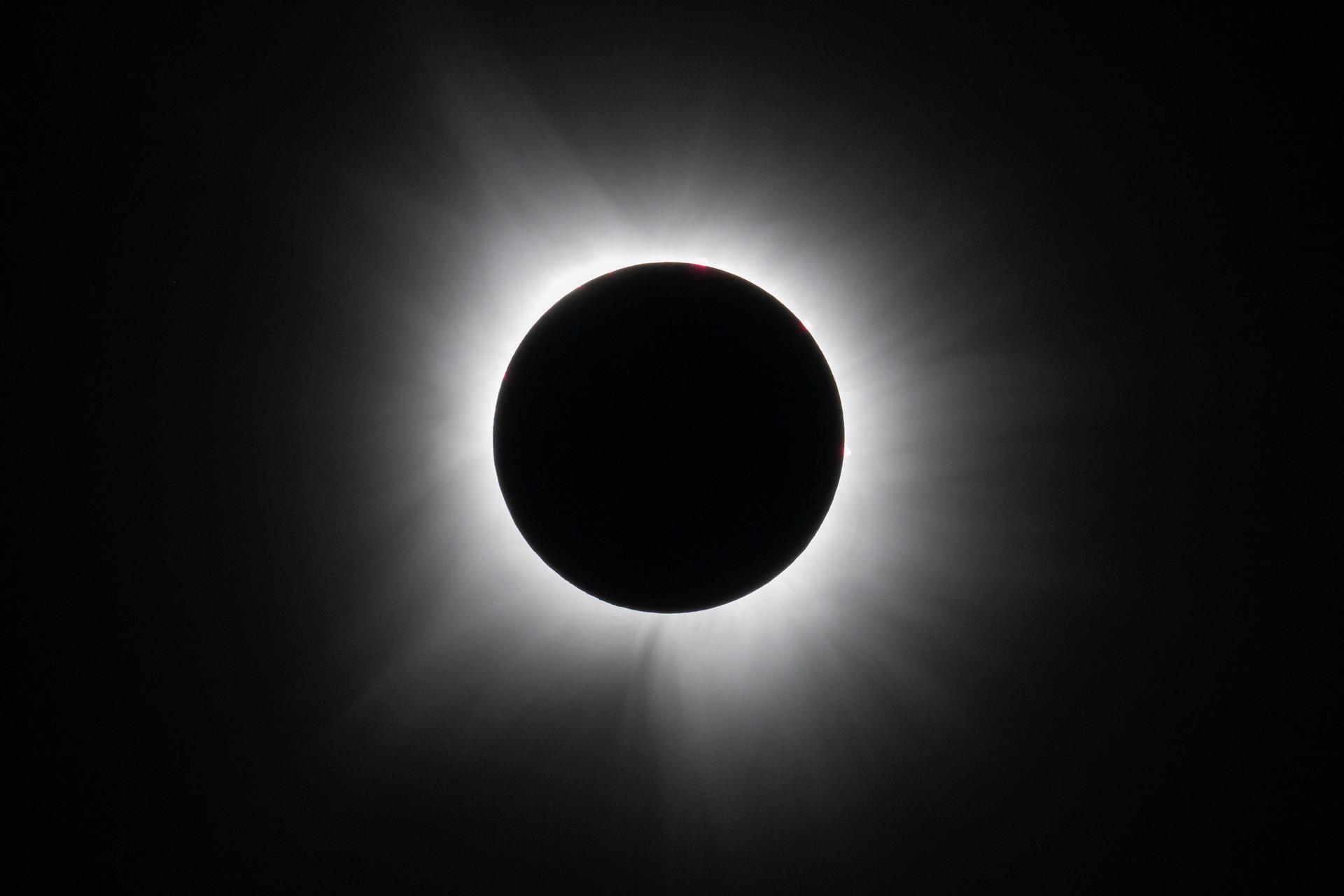
NASA/Keegan Barber
On April 8, 2024, a total solar eclipse swept across North America, from the western shores of Mexico, through the United States, and into northeastern Canada. For the eclipse, NASA helped fund numerous research projects and called upon citizen scientists in support of NASA's goal to understand how our home planet is affected by the Sun - including, for example, how our star interacts with Earth's atmosphere and affects radio communications.
At a press briefing on Tuesday, Dec. 10, scientists attending the annual meeting of the American Geophysical Union in Washington, D.C., reported some early results from a few of these eclipse experiments.
"Scientists and tens of thousands of volunteer observers were stationed throughout the Moon's shadow," said Kelly Korreck, eclipse program manager at NASA Headquarters in Washington. "Their efforts were a crucial part of the Heliophysics Big Year






